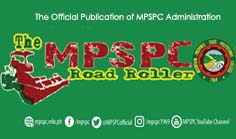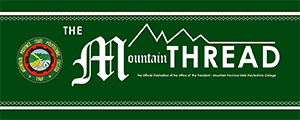SOUNDS AND SOCIETY: EXPLORING POET FELIX KHENSAY’S LITERARY CONTRIBUTION TO THE BONTOC COMMUNITY
Jonnelle D. Fagsao
ABSTRACT
This study focused on the sociolinguistic analysis of Felix Khensay’s selected literary contribution using the Ethnography ‘SPEAKING’ model of Dell Hymes as well as the “ethnopoetic” approach and content analysis to analyze and interpret the narratives and the lyrics in their cultural context. Specifically, the research sought to explore Felix Khensay’s literary contributions by examining the form, content and function of Felix Khensay’s literary contributions using sociolinguistic analysis based on Dell Hymes’ Ethnography theory and describe how Khensay’s literary works as a reflection of Bontok worldview. To bring about the literary interpretation, ethnography ‘SPEAKING’ model of Dell Hymes as well as the “ethnopoetic” approach and content analysis to literature were used.
Among the local Igorot poets of contemporary times, Felix Khensay was chosen because he is known for his unique deep vernacular Bontok lyrics and matchless melody on his songs which has an indigenous twist in music. His contributions are classified according to the following genres: short narrative “Nan Khotok Nan Engengengelan nan Komaw iska Khoweng” (The Reason Why Mosquitos Keep on Buzzing in our Ears)”; funeral songs, a) Nan Tet-ewa ay Ifaknang (The True Riches), and love song, “Odemdem”.
His “Chag-ay san Achog” (funeral songs) draws heavily on certain poetic devices, specifically alliteration and the use of definite vowel phoneme to form a rhyming sound that makes up a dominant rhyme scheming at the ends of each lines in every song. This method is very common to every song composed by Khensay to make the song easier to memorize and place it in a poetic, artistic milieu, rather than simply rendering the song in conversational “Ifuntok”. However, two of these devices (and possibly more) have significant contributions to the meaning of the songs in his “Chag-ay san Achog” (Funeral Songs), as well as the form. One is the use of alliteration which is normal in every Bontok local songs to deepen the meaning of a text and provide additional imagery to the song, while the dominant use of vowel phoneme, on the other hand, not only emphasizes important information in the use of rhymes, but also serves a trademark of Khensay in composing songs in a different themes.
The study of these devices leads to the discovery of other applications for alliterative sound symbolism and rhymes, or find other poetic devices that contribute to the meaning of Khensay’s literary contributions. There may be other poetic devices which the poet did use similar to other styles of composers in penning their lyrics.




















